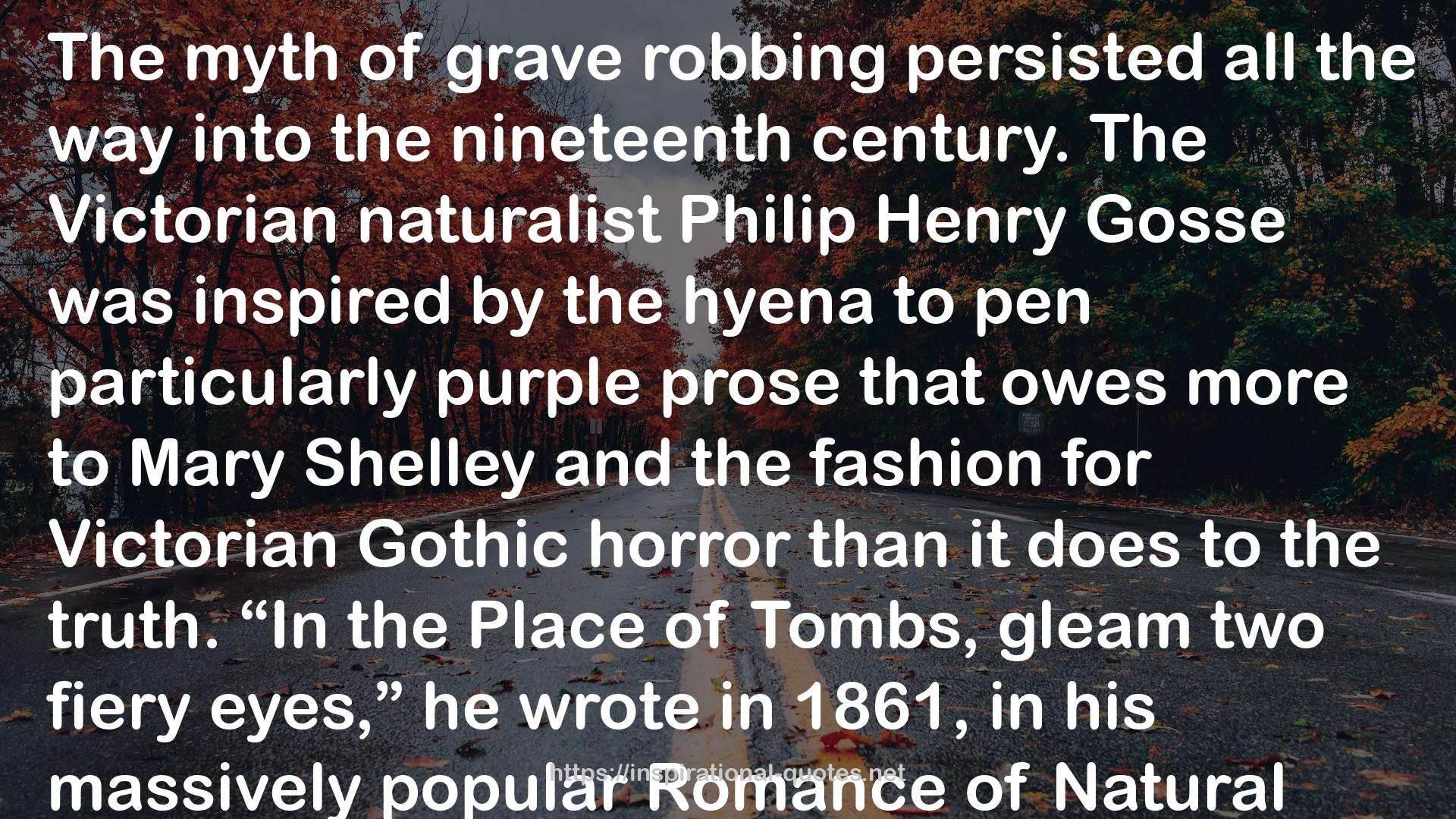" The myth of grave robbing persisted all the way into the nineteenth century. The Victorian naturalist Philip Henry Gosse was inspired by the hyena to pen particularly purple prose that owes more to Mary Shelley and the fashion for Victorian Gothic horror than it does to the truth. “In the Place of Tombs, gleam two fiery eyes,” he wrote in 1861, in his massively popular Romance of Natural History, “with bristling mane and grinning teeth, the obscene monster glares at you, and warns you to secure a timely retreat.” Other naturalists of the era showed a tad more restraint, but they still described the hyena as “a most mysterious and awful animal,” “rank and coarse” with “revolting habits.” This creature, they decided, was “adapted to gorge on the grossest animal substances, dead or alive, fresh or corrupted,” and as such was “cordially detested by the natives in all countries. "
― , The Unexpected Truth About Animals: A Menagerie of the Misunderstood
